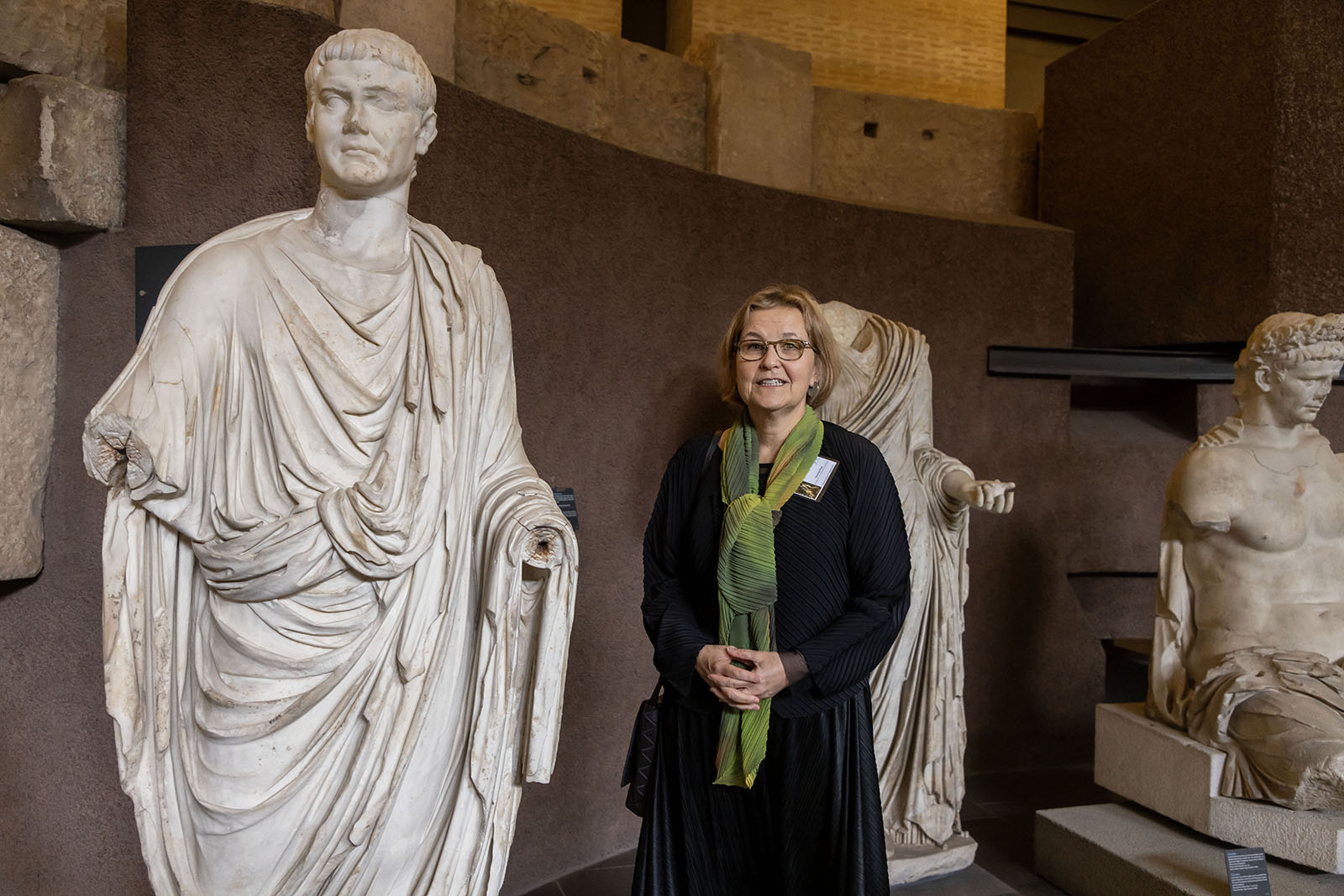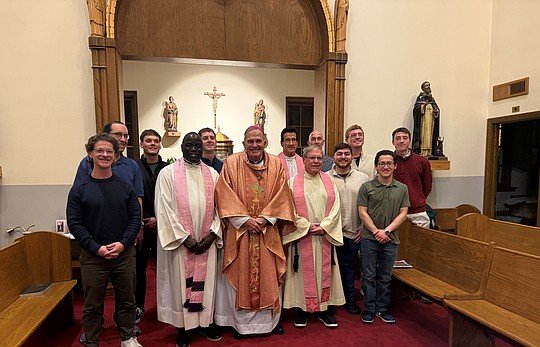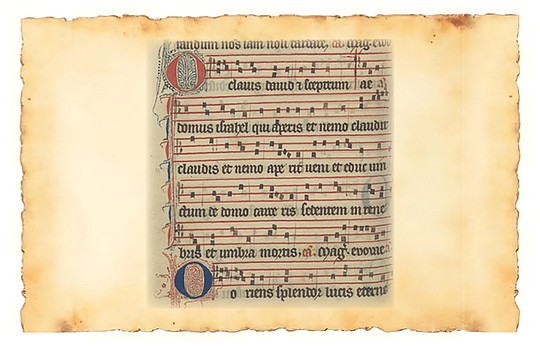At Vatican, museum directors look at conveying art's religious meaning
February 18, 2025 at 11:08 a.m.

VATICAN CITY (CNS) • The Catholic Church and cultural institutions must work together to overcome the "crisis of transmission" that prevents people from recognizing the artistic and religious value of art in museums, said the Vatican's key liaison with the world of culture.
The arts have been shaped by religion throughout history, and as the number of religiously unaffiliated people grows in many countries, the world of culture must consider the consequences of losing the "cultural key" of religion, said Cardinal José Tolentino de Mendonça, prefect of the Dicastery for Culture and Education.
Without that understanding, he said, "great national museums would become storehouses of barely legible objects, putting an entire human patrimony at risk of incomprehension."
The cardinal gave the opening address at a meeting of museum directors and other figures from the world of culture at the Vatican Museums Feb. 15 as part of the Jubilee for Artists and the World of Culture.
"To not understand the cultural code of religion is not only a spiritual shortcoming, it is also a cultural and societal shortcoming, because it means losing sight of a decisive part of the horizon in which we have historically been placed," he said. "To understand the reality and legacy of religion is to understand oneself."
The event, titled "Sharing Hope: Horizons of Cultural Heritage," was organized for cultural leaders to reflect on "the current possibilities, methods and languages for the promotion and transmission of the religious and artistic heritage," the dicastery said in a press release.
Kaywin Feldman, director of the National Gallery of Art in Washington, said that a challenge for her museum, which has one of the most comprehensive collections of Renaissance art in the United States, is that "a number of people get frustrated and assume that they cannot enjoy the paintings because they do not understand the imagery."

Kaywin Feldman, director of the National Gallery of Art in Washington, poses for a portrait following an event with museum directors at the Vatican Museums during the Jubilee for Artists and the World of Culture at the Vatican Feb. 15, 2025. CNS photo/Pablo Esparza
The religious works in the National Gallery, she said, are "not simply beautiful works to admire, they are objects of devotion, documents of historical place and time and windows for connection and personal meaning."
Feldman noted that, particularly in the post-pandemic era, loneliness has become widespread, exacerbated by constant digital interaction.
In response, museums can serve as spaces for human connection, she said, "both for people who come specifically to convene with religious art and those who come to escape loneliness, anxiety and uncertainty."
Gabriele Finaldi, director of the National Gallery in London, said that about 30% of the museum's collection consists of Christian imagery, and some of its most successful exhibitions have focused on explicitly religious themes – despite many visitors not being religious.
Displaying devotional items such as Christian paintings, the museum seeks to highlight "why these works were created and to deepen the significance they had for their first audiences," he said, which allows religion to be discussed, but not reduced, through its aesthetics.
A 2000 exhibit on representations on Christ, he noted, "explored how Christian artists tried to represent Jesus Christ, God incarnate, not from a theological point of view but showing the challenges of his representation, above all as the paradoxical identity of Christ as true God and true man."
A 2023 exhibit focused on historical representations of St. Francis of Assisi, he said, and included a piece of cloth from the saint's tunic that was loaned from the Basilica of the Holy Cross in Florence and offered visitors a chance for religious devotion during their visit. He added that other, non-explicitly religious, pieces were included in the exhibit conveying care for creation and humility – values associated with St. Francis that resonated even with non-religious visitors.
Miguel Falomir Faus, director of the Prado Museum in Madrid, told participants that even in a country with a strong Christian history such as Spain, the museum is increasingly working to educate visitors about the religious meaning behind its collections.
For example, the museum produces informational pamphlets on historically and theologically significant works, such as "The Fountain of Life" by Jan van Eyck, and partners with religious institutions to display its works in historically sacred spaces such as churches.
Similarly, the Prado collaborates with religious institutions by restoring their artwork in the museum's conservation laboratories before displaying it in special exhibitions.
Seated in the Vatican Museums – where faith and art have been uniquely intertwined for centuries – the museum directors discussed how to help modern audiences engage with the religious meaning of the masterpieces around them. Their challenge is not just to preserve these works, but to ensure they remain accessible and relevant to new generations.
As Feldman put it, museums "are a place to learn about the past, and also to hope about the future."
Related Stories
Monday, December 15, 2025
E-Editions
Events
VATICAN CITY (CNS) • The Catholic Church and cultural institutions must work together to overcome the "crisis of transmission" that prevents people from recognizing the artistic and religious value of art in museums, said the Vatican's key liaison with the world of culture.
The arts have been shaped by religion throughout history, and as the number of religiously unaffiliated people grows in many countries, the world of culture must consider the consequences of losing the "cultural key" of religion, said Cardinal José Tolentino de Mendonça, prefect of the Dicastery for Culture and Education.
Without that understanding, he said, "great national museums would become storehouses of barely legible objects, putting an entire human patrimony at risk of incomprehension."
The cardinal gave the opening address at a meeting of museum directors and other figures from the world of culture at the Vatican Museums Feb. 15 as part of the Jubilee for Artists and the World of Culture.
"To not understand the cultural code of religion is not only a spiritual shortcoming, it is also a cultural and societal shortcoming, because it means losing sight of a decisive part of the horizon in which we have historically been placed," he said. "To understand the reality and legacy of religion is to understand oneself."
The event, titled "Sharing Hope: Horizons of Cultural Heritage," was organized for cultural leaders to reflect on "the current possibilities, methods and languages for the promotion and transmission of the religious and artistic heritage," the dicastery said in a press release.
Kaywin Feldman, director of the National Gallery of Art in Washington, said that a challenge for her museum, which has one of the most comprehensive collections of Renaissance art in the United States, is that "a number of people get frustrated and assume that they cannot enjoy the paintings because they do not understand the imagery."

Kaywin Feldman, director of the National Gallery of Art in Washington, poses for a portrait following an event with museum directors at the Vatican Museums during the Jubilee for Artists and the World of Culture at the Vatican Feb. 15, 2025. CNS photo/Pablo Esparza
The religious works in the National Gallery, she said, are "not simply beautiful works to admire, they are objects of devotion, documents of historical place and time and windows for connection and personal meaning."
Feldman noted that, particularly in the post-pandemic era, loneliness has become widespread, exacerbated by constant digital interaction.
In response, museums can serve as spaces for human connection, she said, "both for people who come specifically to convene with religious art and those who come to escape loneliness, anxiety and uncertainty."
Gabriele Finaldi, director of the National Gallery in London, said that about 30% of the museum's collection consists of Christian imagery, and some of its most successful exhibitions have focused on explicitly religious themes – despite many visitors not being religious.
Displaying devotional items such as Christian paintings, the museum seeks to highlight "why these works were created and to deepen the significance they had for their first audiences," he said, which allows religion to be discussed, but not reduced, through its aesthetics.
A 2000 exhibit on representations on Christ, he noted, "explored how Christian artists tried to represent Jesus Christ, God incarnate, not from a theological point of view but showing the challenges of his representation, above all as the paradoxical identity of Christ as true God and true man."
A 2023 exhibit focused on historical representations of St. Francis of Assisi, he said, and included a piece of cloth from the saint's tunic that was loaned from the Basilica of the Holy Cross in Florence and offered visitors a chance for religious devotion during their visit. He added that other, non-explicitly religious, pieces were included in the exhibit conveying care for creation and humility – values associated with St. Francis that resonated even with non-religious visitors.
Miguel Falomir Faus, director of the Prado Museum in Madrid, told participants that even in a country with a strong Christian history such as Spain, the museum is increasingly working to educate visitors about the religious meaning behind its collections.
For example, the museum produces informational pamphlets on historically and theologically significant works, such as "The Fountain of Life" by Jan van Eyck, and partners with religious institutions to display its works in historically sacred spaces such as churches.
Similarly, the Prado collaborates with religious institutions by restoring their artwork in the museum's conservation laboratories before displaying it in special exhibitions.
Seated in the Vatican Museums – where faith and art have been uniquely intertwined for centuries – the museum directors discussed how to help modern audiences engage with the religious meaning of the masterpieces around them. Their challenge is not just to preserve these works, but to ensure they remain accessible and relevant to new generations.
As Feldman put it, museums "are a place to learn about the past, and also to hope about the future."










